JMSDF 1st Service School 海上自衛隊第1術科学校
|
Title   • File Name • File Name   • Date • Date   • Position • Position   |
|

From Hiroshima Station, it takes about 35 min. to Hiroshima Port via streetcar.
|
|

Hiroshima Port.
|
|

Hiroshima Port.
|
|
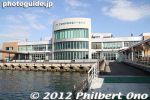
Hiroshima Port as seen from a dock.
|
|

Hiroshima Port.
|
|
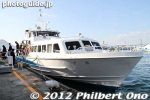
Boat for Etajima island. From Hiroshima Port, it takes about 25 min. to Etajima's Koyo Port, closest to the Naval Academy.
|
|
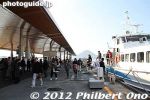
Hiroshima Port.
|
|
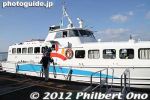
Boat for Etajima island, a short boat ride from Hiroshima Port.
|
|
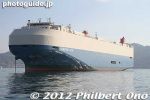
Leaving Hiroshima Port for Etajima island. This is a cargo ship for vehicles called Genuine Ace.
|
|
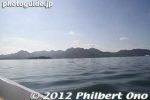
Etajima island in view.
|
|
|
|

Etajima also has shipbuilding facilities.
|
|
|
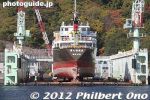
Shipbuilding on Etajima, Hiroshima.
|
|
|
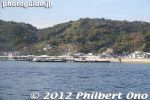
Approaching Etajima's Koyo Port.
|
|

Etajima's Koyo Port.
|
|
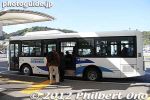
From Koyo Port, take a bus for a 5-min. ride to the Naval Academy. Or take a taxi if a bus is not available.
|
|
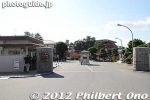
Entrance to the Naval Academy on Etajima.
|
|
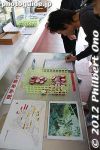
Reservations are not required, but you have to get there and sign up 5 min. before the 90-min. tour starts.
|
|

The Naval Academy conducts free guided tours of the school 3 or 4 times a day. The tour takes you around the campus and allows you to enter a few of the imposing buildings.
|
|

Map of the Naval Academy or Japanese Maritime Self Defense Force First Service School (海上自衛隊第1術科学校).
|
|
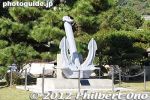
You cannot tour the Naval Academy on your own. You have to join the guided tour. There is a dress code: No miniskirts or provocative clothing by women.
|
|

Two Naval Academy students served as our tour guide.
|
|
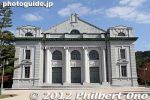
Ceremonial Hall. Built in 1917 and designed for holding ceremonies and moral education. One of the few buildings which we could enter. Etajima, Hiroshima.
|
|
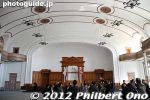
Inside the Ceremonial Hall. It can fit 2,000 people.
|
|
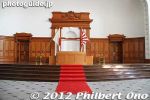
Stage inside the Ceremonial Hall.
|
|
|
|
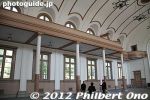
Ceremonial Hall
|
|
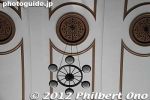
The lights look like a ship's wheel on the ceiling of the Ceremonial Hall.
|
|
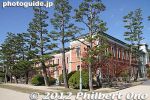
The academy's pine tree trunks grow straight up. They say that even the pine trees stand at attention at the school.
|
|
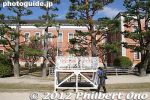
Stand for gatherings.
|
|

The academy's most distinctive building is this Students’ Hall dubbed the "Red Brick Building." We weren't allowed to go inside. Etajima, Hiroshima.
|
|
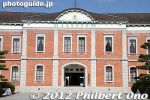
Built in 1893 and used for classrooms and living quarters for students. Today, it is part of the Officer Candidate School and used as classrooms and students' living quarters. Etajima, Hiroshima.
|
|
|
|
|
|
|
|
|
|
|

Students' Hall west wing. Built in 1938, it is used as the main students’ hall of the First Service School.
|
|

Students' Hall west wing. We weren't allowed to enter this building. The Academy also has female students, but after graduating they do not serve on navy ships. They work only on land.
|
|
|
|
|
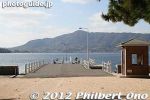
Front Pier. This is considered the school's front gate instead of the gate on land. Officer Candidate School graduates are sent off here by school staff and a military band and transferred to a training fleet anchored offshore in Etauchi inlet.
|
|

Training boats
|
|
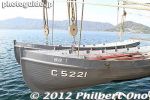
Training boats
|
|

Battleship gun, life-size.
|
|
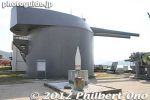
The Gun turret was a part of the main gunnery system of Battleship Mutsu and was transferred to Imperial Naval Academy for use as a study aide in 1935.
|
|
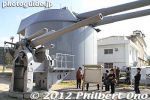
Gun turrets
|
|
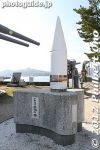
Projectile of a "Mutsu" class battleship.
|
|

Torpedoes
|
|
|
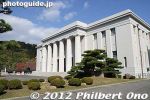
Naval History Museum on Etajima. Built in 1936, the museum is substantial with detailed exhibits tracing Japan's naval history (including the Pearl Harbor attack).
|
|
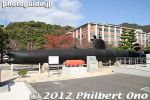
The Naval History Museum on Etajima has this outdoor display of one of the five midget submarines used in the Pearl Harbor attack.
|
|
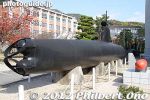
One of the five midget submarines used in the Pearl Harbor attack. On display at the Naval History Museum on Etajima island, Hiroshima.
|
|
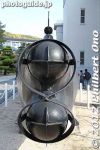
Torpedo bay of midget submarine used in Pearl Harbor attack.
|
|
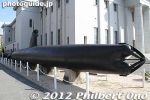
The midget sub displayed here was found in 1960 off Keehi Lagoon east of Pearl Harbor's entrance. The sub had been damaged by a depth charge attack and abandoned by its crew before it could fire its torpedoes.
|
|
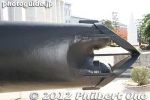
It was subsequently salvaged and restored for display at Etajima in 1962. The front part of the sub was severed, so the front part was reconstructed by a Kure shipbuilder for this display.
|
|

Midget sub's conning tower and periscope. The sub had only two crew members.
|
|
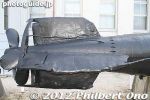
Midget sub's rudder and propeller.
|
|
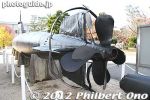
They eventually found all five subs (the fifth one was finally found in 2009) used at Pearl Harbor. Two of them are on display. One of them is here and the other is at the National Museum of the Pacific War in Fredericksburg, Texas.
|
|
|
|
|
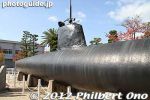
This midget sub was transported by boat from Pearl Harbor to Yokosuka (Kanagawa Pref.), then to Etajima in 1961.
|
|
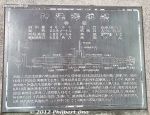
About this midget sub: Length: 23.9 meters, Weight: 46 tons, Inner diameter: 1.85 meter, Underwater speed: 19 knots (600 horsepower)
|
|
|
|
|
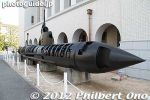
Behind the midget sub used in Pearl Harbor, another different type of midget sub is displayed.
|
|
|
|
|
|
|
|
|
|
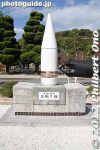
A projectile used by battleship Yamato during WWⅡ.
|
|
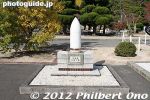
Projectile used in Japan-China War in 1894.
|
|
|
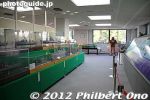
Last stop on the tour was the Etajima Club where there is a gift shop, restaurant, and this small museum on the 2nd floor.
|
|
|
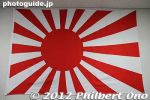
Japanese navy rising sun flag
|
|
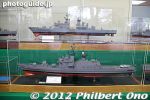
Models of navy warships.
|
|
|
|
|
|

Etajima Club exhibition room.
|
|
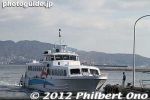
Back at Koyo Port to board this boat for Kure, across the Seto Inland Sea.
|
|
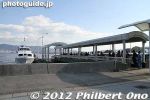
Koyo Port on Etajima, Hiroshima.
|
|
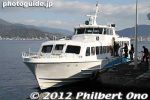
Our boat for Kure from Etajima island.
|
|
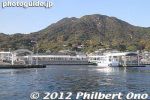
Leaving Koyo Port, Etajima.
|
|

Inside our boat to Kure from Etajima.
|
|

Kure across the Inland Sea.
|
|

Kure is a short boat ride from Etajima.
|
|
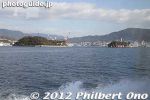
On the way to Kure.
|
|
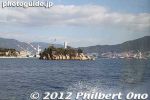
A few islands in the Seto Inland Sea on the way to Kure. In Kure, we visited the Yamato Museum.
|
|
|
|
|
|
|